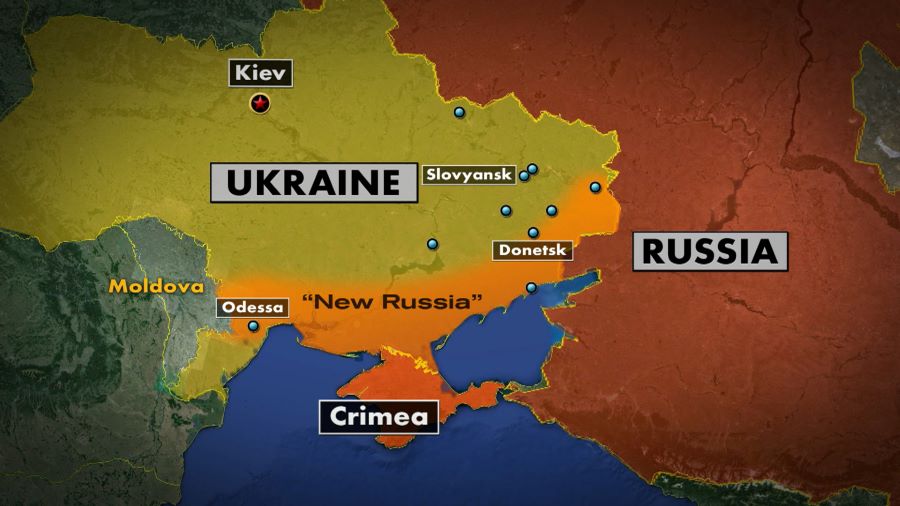Fake news has become one of the most dangerous weapons in the digital age, capable of toppling governments, destroying reputations, and polarizing entire societies within hours. Young historian Yuval Noah Harari made a profound observation when asked how to recognize fake news: “Fake news is that which doesn’t look like fake news.” This counterintuitive truth reveals why misinformation spreads so rapidly and why millions fall victim to deliberate deception every single day.
According to Harari, false information is meticulously crafted to appear authentic and align perfectly with our existing beliefs and biases. If misinformation looked obviously fake, nobody would be fooled. This sophisticated deception makes fake news detection increasingly challenging in an era where social media platforms amplify content based on engagement rather than accuracy.
The Truth About Truth: Why Humans Believe Myths
There Was Never Really an “Age of Truth”
Harari provocatively argues that humanity has never truly lived in an era of pure factual truth. Throughout history, humans have believed in myths, fictional narratives, and shared stories that shape civilization. Concepts like religion, nationhood, and even money represent collective beliefs rather than objective physical realities.
This historical context helps explain why fake news finds such fertile ground in human psychology. We’re evolutionarily predisposed to believe compelling narratives that reinforce our worldviews, regardless of factual accuracy.
Why False Information Spreads Faster Than Facts
Research consistently demonstrates that misinformation spreads approximately six times faster than accurate information on social media platforms. The reason is straightforward yet troubling: false information is specifically designed to “fit” people’s preconceptions and biases.
Emotionally charged content—whether outrage, fear, or tribal identity—generates more engagement than nuanced, factual reporting. Social media algorithms, optimized for user engagement, inadvertently become distribution networks for the most emotionally manipulative content rather than the most accurate.
GenZ Movement Awakens to Misinformation Danger
From Viral Sharers to Critical Thinkers
Following recent youth-led movements, a remarkable transformation has occurred among younger generations. The same demographic that previously shared content instantly, formed immediate opinions, and engaged in rapid-fire debates has suddenly begun demanding evidence, verification, and logical reasoning before accepting information.
This shift represents a crucial awakening: when social media platforms capable of challenging government authority transform into “fake news factories,” the resulting physical, economic, and psychological damage becomes personally devastating.
Youth Leaders Warn Against Disinformation Campaigns
Prominent social media influencers and movement leaders have begun actively warning their followers about misinformation threats. Popular accounts like “Routine of Nepal Band” posted urgent messages: “In situations like this, many fake news items spread. Before sharing anything, understand it first and share only from trusted sources.”
Similarly, Saroj Karki, founder of Project Kura (active in Nepali YouTube cinema), warned: “Content from those trying to fulfill their selfish interests by spreading false information will appear on social media. It may have already started appearing. You should cross-check such things.” His Facebook post alone received 661 shares, indicating growing awareness.
Forged Signatures and Fabricated Statements
Recent incidents demonstrate the sophistication of disinformation campaigns. Youth movement leaders Raksha Bam and Yujan Raj Bhandari had their signatures forged on fabricated documents claiming to represent movement decisions. They were forced to create video statements debunking these forgeries, highlighting how easily authentic-looking false documents can be created and distributed.
Understanding Fake News: Definitions and Types
What Exactly Is Fake News?
Fake news refers to deliberately false information intentionally produced and disseminated to deceive audiences. This isn’t accidental error or honest mistakes—it’s weaponized falsehood designed to manipulate public opinion, damage reputations, or advance specific agendas.
Two Categories of False Information
Misinformation: False information spread without malicious intent, often due to ignorance or lack of verification. People share misinformation believing it to be true.
Disinformation: Deliberately fabricated false information created with intention to deceive. Disinformation represents coordinated campaigns to manipulate public perception through systematic lies.
According to media communication experts, fake news distorts reality to emotionally manipulate audiences. It’s not merely “wrong information”—it functions as a psychological weapon designed to trigger emotional responses that override critical thinking.
Why Are Audiences Particularly Vulnerable?
Rapid Internet Growth Without Digital Literacy
According to Nepal Telecommunication Authority data, internet users are increasing at unprecedented rates, but media literacy hasn’t grown proportionally. This creates a dangerous gap where millions gain online access without developing skills to evaluate information credibility.
This means digital literacy remains critically weak. Most users never check information sources and react based solely on headlines without reading actual content.
Third World Digital Literacy Gap
Studies across developing nations show legal action against misinformation receives more investment than digital literacy education. This enforcement-heavy approach fails to address root causes—citizens lack fundamental skills to identify false information independently.
Most social media users treat every post they encounter as legitimate news. Consequently, they’re easily influenced by emotionally charged and misleading content, forming opinions and making decisions based on fabricated information.
Sensitive Topics Become Easy Targets
Experts note that politically polarizing issues, social injustice, and foreign employment topics become prime targets for fake news campaigns. These emotionally sensitive subjects already carry strong feelings, making audiences more susceptible to confirmation bias and less likely to fact-check claims that align with their existing beliefs.
For those seeking reliable news sources and comprehensive fact-checking, platforms like Singhadarbar provide verified information and analysis that can serve as trusted reference points.
7 Expert-Backed Methods to Identify Fake News
1. Always Verify the Source
Check whether information comes from credible media outlets or official websites. Legitimate news organizations have established reputations, editorial standards, and accountability mechanisms. Be immediately suspicious of content from unknown websites, suspicious URLs, or accounts with no verification.
Warning signs:
- Domain names that mimic legitimate news sites with slight variations
- No “About Us” page or contact information
- Recently created websites with no publication history
2. Read Beyond the Headline
Clickbait headlines designed to provoke outrage or shock often signal fake news. Sensational, emotionally manipulative headlines represent the first red flag of potential misinformation.
Headline warning signs:
- ALL CAPS or excessive exclamation marks
- Extreme language: “SHOCKING,” “UNBELIEVABLE,” “THEY DON’T WANT YOU TO KNOW”
- Claims that seem too outrageous to be true
- Vague attributions like “experts say” without naming specific sources
3. Verify Photo and Video Authenticity
Many fake news articles use old photographs, images from completely different contexts, or digitally manipulated visuals. Reverse image searching through Google Images or TinEye can reveal whether photos have been used previously in different contexts.
Video verification tips:
- Check upload dates and original sources
- Look for signs of editing or manipulation
- Verify location claims through visible landmarks
- Cross-reference with other news coverage of the same event
4. Conduct Systematic Fact-Checking
Utilize dedicated fact-checking platforms and independent media organizations that specialize in verification. International fact-checking resources include Snopes, FactCheck.org, and PolitiFact, while many countries now have local fact-checking initiatives.
Fact-checking best practices:
- Search for the claim on multiple fact-checking websites
- Look for original source documentation
- Check whether mainstream media has covered the story
- Verify statistics and data with original research sources
5. Recognize Emotional Manipulation Tactics
Phrases like “You can’t tolerate this anymore,” “Everyone is corrupt,” or “They’re destroying our country” represent common fake news strategies designed to bypass rational thinking through emotional triggers.
Emotional manipulation indicators:
- Appeals to fear, anger, or tribal identity
- Us-versus-them framing
- Absolute statements with no nuance
- Content that makes you feel immediate outrage before you’ve verified facts
6. Cross-Reference Multiple Sources
Legitimate news stories appear across multiple credible news outlets. If only one source reports a supposedly major story, be extremely skeptical. True news events generate coverage from various independent journalists and organizations.
7. Examine Author Credentials
Check who wrote the article and their qualifications. Legitimate journalists have bylines, professional credentials, and publication histories. Anonymous articles or content from unverifiable authors deserve additional scrutiny.
Protecting Yourself: Practical Defense Strategies
Don’t Automatically Trust Social Media Content
Every post you encounter on social media isn’t news. Platforms like Facebook, Twitter/X, Instagram, and TikTok mix news, opinion, entertainment, and deliberate falsehoods with no clear distinction. Treat social media content with healthy skepticism.
Verify Before Sharing
You become part of the misinformation problem when you share false content, even unintentionally. Before hitting “share,” take 60 seconds to verify the information’s accuracy. Your network trusts your judgment—don’t abuse that trust by spreading misinformation.
Avoid Excessive Emotional Reactions in Online Debates
Fake news thrives on emotional engagement. When you respond with intense emotion to provocative content, you amplify its reach and effectiveness. Pause, verify, then respond thoughtfully based on facts rather than feelings.
Invest in Digital Literacy Education
Both individuals and institutions must prioritize digital literacy education. Schools, community organizations, and workplaces should provide training in critical thinking, source evaluation, and online information assessment.
Support Effective Fact-Checking Mechanisms
Governments and media institutions need robust fact-checking systems with real accountability. Support legislation and initiatives that promote media literacy and penalize deliberate disinformation campaigns without suppressing legitimate free speech.
Share Debunked Information With Evidence
When you discover false information, share corrections with supporting evidence. Help your network understand why specific claims are false and how you verified the accurate information.
The Real Victims of Fake News
Ordinary citizens ultimately suffer the most from fake news. They form opinions based on false information, engage in misguided debates, damage relationships, and make consequential decisions based on lies.
Fake news possesses the terrifying ability to make falsehoods appear as truth in society. As the saying goes: “Tell a lie a thousand times and it becomes truth.” But resistance begins with individual citizens asking questions, seeking evidence, and acting as responsible information consumers.
The Psychological Impact of Misinformation
Confirmation Bias Amplification
Fake news exploits confirmation bias—our tendency to accept information that confirms existing beliefs while rejecting contradictory evidence. This psychological vulnerability makes misinformation particularly effective at deepening political divides and social polarization.
Trust Erosion in Institutions
When fake news becomes pervasive, public trust in legitimate institutions—government, media, science, and education—erodes dramatically. This trust deficit makes societies more vulnerable to authoritarian manipulation and democratic backsliding.
Mental Health Consequences
Constant exposure to misinformation creates anxiety, confusion, and social fragmentation. People struggle to distinguish reality from fabrication, leading to decision paralysis and withdrawal from civic engagement.
Technology’s Role in Combating Fake News
AI-Powered Detection Tools
Artificial intelligence systems are being developed to identify fake news patterns, analyze content authenticity, and flag suspicious information for human review. While imperfect, these tools represent important defenses against industrial-scale disinformation.
Blockchain for Information Verification
Emerging blockchain technologies could create immutable records of content origin, helping verify authentic information sources and track how content spreads across platforms.
Platform Accountability Measures
Social media companies face increasing pressure to implement stronger content moderation, label disputed content, and reduce algorithmic amplification of misinformation. User demand for accountability drives these changes.
Conclusion: Personal Responsibility in the Information Age
The fake news threat is so alarming that most people don’t understand its severity until they personally become victims. But we shouldn’t wait for that painful moment of realization.
Fighting fake news requires collective effort starting with individual responsibility. Every time you pause to verify information before sharing, question suspicious claims, and demand evidence rather than accepting emotional narratives, you contribute to a healthier information ecosystem.
The battle against misinformation isn’t won through technology or legislation alone—it requires millions of citizens choosing truth over convenience, facts over feelings, and verification over viral content. Your next action when encountering suspicious information might seem small, but multiplied across society, these individual choices determine whether truth or falsehood prevails.
Remember: In the digital age, critical thinking isn’t optional—it’s survival.



















Comments